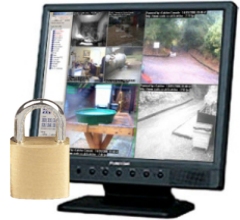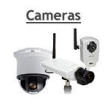
|
|
|
iCatcher Help
Learn how to set up and use iCatcher's features to their full potential. read more... File download areaDownload all the iCatcher software products, including legacy versions. read more... Wildlife picture galleryi-Catcher Wildlife captures fantastic scenes from nature. Have a look at some of the best. read more... Capture equipmentFind out about suitable equipment for use with iCatcher, from cameras to lighting, and more. read more... CCTV ShopWe have an online shop where you can buy video and capture hardware, as well as iCatcher bundles at discounted price. read more... |

iCatcher With HTTPS Using secure HTTP with the iCatcher Web View As part of a secure cctv system it is desirable to access the iCatcher Web View using HTTPS, that is HTTP encrypted using the standard SSL protocol. iCatcher itself does not support the HTTPS protocol, as it is very complicated to implement and requires SSL certificates to be installed for correct operation. However, iCatcher can be accessed through HTTPS by making use of the free and open source proxy server software Squid. Squid is available for both the Windows and Unix (including Linux) operating systems, but here we will concentrate on setting up the Windows version as a local proxy. This is the simplest configuration of Squid, but more complex setups are possible, including multi-machine configurations. You are advised to consult the Squid documentation for more information on such configurations. Installation You will need to download the Squid proxy server installation via the link above. Once downloaded, you will need to extract it to the local folder "Squid" on your C: hard drive. The Squid folder has a complex structure, but you only need to pay attention to the "cert" folder within the "etc" folder in the main "Squid" folder. The "cert" folder is used to hold your secure server certificate and key files. You will need to place copies of the "server.key" and "server.crt" files in this folder. A simple configuration file is provided in the package which provides a simple HTTPS server forwarding requests onto the real web server of iCatcher Console running on the same machine. If you are running the Squid proxy server on a machine separate to your iCatcher Console install, then you will need to edit the "cache_peer" entry in the configuration file to reflect the IP address of the iCatcher machine. You can also specify that the proxy server should forward requests on the standard HTTP port 80 by uncommenting the "http_port" entry. The configuration file can be found in the "etc" folder, and is called "squid.conf". Once it has been adjusted as required, you will need to run the "Install.bat" file, which will register the Squid proxy service and start it running on the machine. Access to the iCatcher system via HTTPS will be similiar to the normal method, but you will need to change "http" to "https" on the address bar of your browser. If you are using a self-generated server certificate the browser will report warnings about the certificate being from an untrusted source. This is simply because the browser does not recognise the certificate authority used to sign your server certificate (i.e. yourself). In this case, this warning can be ignored. Port Forwarding To access HTTPS through a system where port forwarding is required (e.g. standard ADSL connections) you need to forward port TCP port 443. Unless you also want to access the iCatcher system via non-secure HTTP you do not need to forward port 80. |

